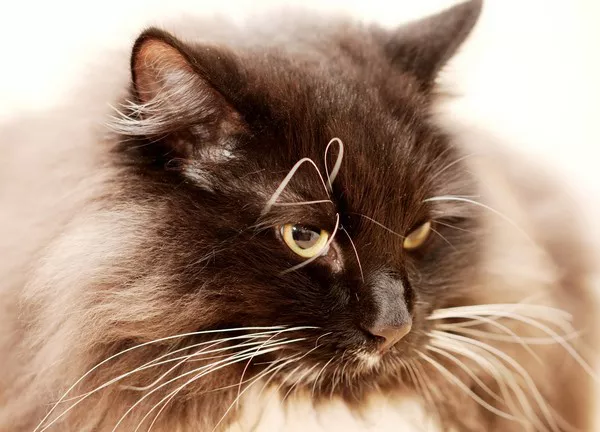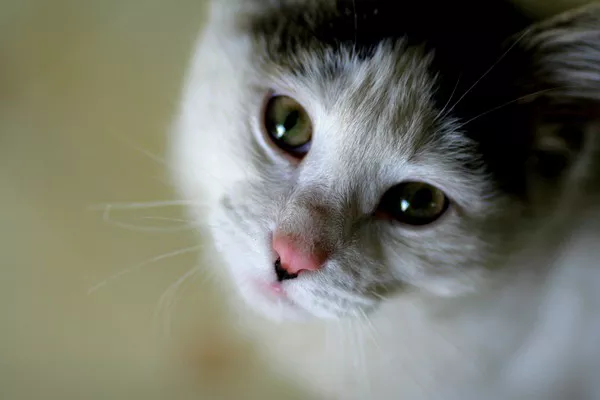Liver flukes are parasitic flatworms that can cause significant health issues in cats. These parasites affect the liver, bile ducts, and gallbladder, leading to a range of symptoms that can impact your cat’s overall well-being. In this article, we will explore liver flukes in cats, how they are transmitted, symptoms, diagnosis, treatment options, and prevention methods. Ensuring optimal cat health is essential for every pet owner, and addressing liver fluke infestations is a crucial aspect of this.
What Are Liver Flukes?
Liver flukes are parasitic flatworms belonging to the class Trematoda. These parasites commonly infect the liver and bile ducts of various animals, including cats. Liver flukes typically infest the liver, causing inflammation, tissue damage, and bile duct obstruction. While liver flukes are not as common as some other parasites, their impact on cat health can be severe if left untreated.
Liver flukes are typically introduced into the cat’s body through the ingestion of infected intermediate hosts, such as snails or fish. Cats can also contract liver flukes by eating other animals that have consumed infected snails or fish.
How Do Cats Get Liver Flukes?
Cats typically acquire liver flukes through their diet. The lifecycle of liver flukes involves several stages, and the parasite’s eggs are passed through the feces of infected animals. These eggs hatch into larvae, which then infect snails or other aquatic organisms. These snails or aquatic creatures act as the intermediate hosts, where the larvae mature.
When a cat ingests these intermediate hosts, the liver flukes enter the cat’s digestive system, eventually migrating to the liver and bile ducts. Once they reach the liver, the liver flukes mature and begin to cause health issues in the affected cat. In many cases, liver flukes enter the cat’s system when they consume raw or undercooked fish, snails, or other infected prey.
Symptoms of Liver Flukes in Cats
Liver fluke infestations may present with a variety of symptoms. The severity of the symptoms often depends on the extent of the infection, the number of flukes present, and the overall health of the cat. Symptoms of liver fluke infestation in cats can include:
Lethargy and Weakness: One of the earliest signs of liver fluke infection is a noticeable lack of energy. Cats may become more sluggish and less active than usual.
Loss of Appetite and Weight Loss: As liver flukes invade the liver, they can cause digestive issues and reduce a cat’s appetite. This can lead to noticeable weight loss and a lack of interest in food.
Vomiting and Diarrhea: Cats with liver fluke infections may vomit or experience diarrhea due to the parasitic damage to the liver and digestive system.
Yellowing of the Skin or Eyes (Jaundice): Liver flukes can interfere with liver function, which can result in jaundice. This condition causes the skin, eyes, and gums to develop a yellowish tint due to the accumulation of bilirubin.
Abdominal Pain and Swelling: In some cases, liver fluke infections may cause pain or swelling in the abdomen. This is often accompanied by tenderness when the abdomen is palpated.
Fever: Cats with liver flukes may also experience a fever as their immune system responds to the infection.
If you notice any of these symptoms in your cat, it is important to consult a veterinarian for proper diagnosis and treatment. Left untreated, liver flukes can cause severe liver damage and potentially lead to liver failure.
Diagnosing Liver Flukes in Cats
Proper diagnosis of liver flukes in cats requires a veterinarian’s expertise. Typically, diagnosis involves several steps, including a thorough physical examination, laboratory tests, and imaging studies.
Physical Examination: The veterinarian will perform a comprehensive physical exam to check for signs of jaundice, abdominal pain, or swelling, which may indicate liver fluke infestation.
Fecal Examination: Since liver flukes lay eggs that are passed in the feces, a fecal examination may be performed to detect the presence of these eggs. However, liver flukes may not always release eggs into the cat’s feces, so this test may not always be conclusive.
Blood Tests: Blood tests may be ordered to check liver function. Abnormal levels of liver enzymes, bilirubin, or other markers may indicate liver damage due to fluke infestation.
Ultrasound or X-rays: In some cases, imaging studies such as ultrasounds or X-rays may be necessary to examine the liver and bile ducts for any abnormalities caused by the presence of liver flukes.
Once liver flukes are confirmed, your veterinarian will work to develop an appropriate treatment plan to eliminate the parasites and protect your cat’s health.
Treatment of Liver Flukes in Cats
Treatment of liver flukes in cats generally involves a combination of medication to eliminate the parasites and supportive care to help the cat recover from any damage to the liver and digestive system.
Anthelmintic Medications: Anthelmintics are medications used to treat parasitic infections. In the case of liver flukes, medications such as praziquantel, triclabendazole, or albendazole are commonly prescribed to eliminate the parasites. These medications target and kill the flukes, allowing the body to clear them.
Supportive Care: Depending on the severity of the infection and liver damage, your veterinarian may recommend supportive care. This may include intravenous fluids, nutritional support, and medications to manage symptoms such as vomiting, diarrhea, and fever.
Liver Support: In cases of liver damage, your veterinarian may recommend supplements or medications to support liver function and promote healing. These may include antioxidants, amino acids, and herbal supplements designed to protect liver cells and enhance liver regeneration.
Symptomatic Treatment: In some cases, additional treatments may be necessary to address specific symptoms. For example, if your cat is dehydrated due to vomiting or diarrhea, fluids may be administered to help restore hydration levels. If your cat is in pain, pain management medications may be prescribed.
The length of treatment can vary depending on the severity of the infestation and the cat’s overall health. It is important to follow your veterinarian’s instructions carefully and ensure that your cat completes the full course of treatment.
Prevention of Liver Flukes in Cats
Preventing liver fluke infestations is essential to maintaining optimal cat health. While it is not always possible to completely eliminate the risk, there are several strategies that can help minimize the chances of infection.
Avoid Feeding Raw or Undercooked Fish: Since liver flukes are often contracted through the consumption of raw or undercooked fish, it is important to avoid feeding your cat these foods. Ensure that any fish or seafood you feed is fully cooked to reduce the risk of liver fluke transmission.
Monitor Outdoor Activities: If your cat spends time outdoors, particularly near bodies of water, it may be at greater risk of exposure to infected snails or other intermediate hosts. Limit access to areas where snails or aquatic creatures may be present.
Regular Deworming: Regular deworming is essential to keep your cat free from various internal parasites, including liver flukes. Consult your veterinarian about an appropriate deworming schedule based on your cat’s lifestyle and risk factors.
Proper Hygiene: Ensure that your cat’s living environment is clean and free from parasites. Regularly clean litter boxes, food bowls, and bedding to minimize the risk of parasite transmission.
Conclusion
Liver flukes can significantly affect a cat’s health, causing symptoms such as lethargy, loss of appetite, vomiting, and jaundice. If left untreated, these parasitic infections can result in severe liver damage and compromise your cat’s overall health. However, with proper diagnosis and treatment, liver flukes can be eliminated, and your cat can recover and regain good health.
As a pet owner, it is essential to prioritize your cat’s health by preventing liver fluke infestations and seeking veterinary care as soon as you suspect an issue. Regular check-ups, a balanced diet, and precautions to avoid exposure to potential carriers of liver flukes are key to protecting your cat from these harmful parasites. By staying vigilant and proactive about your cat’s health, you can help ensure that they live a long, happy, and parasite-free life.
Related Topics
























